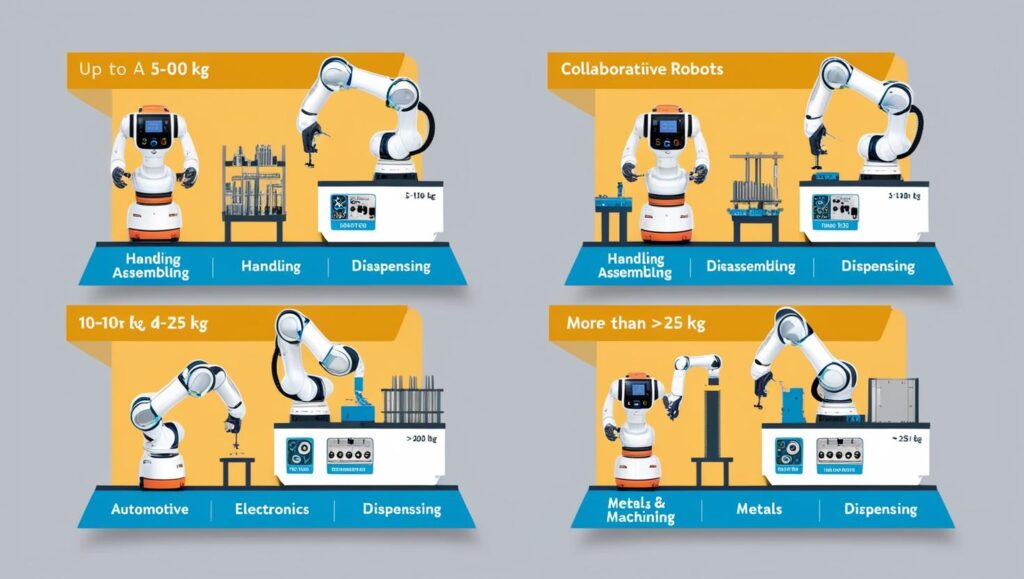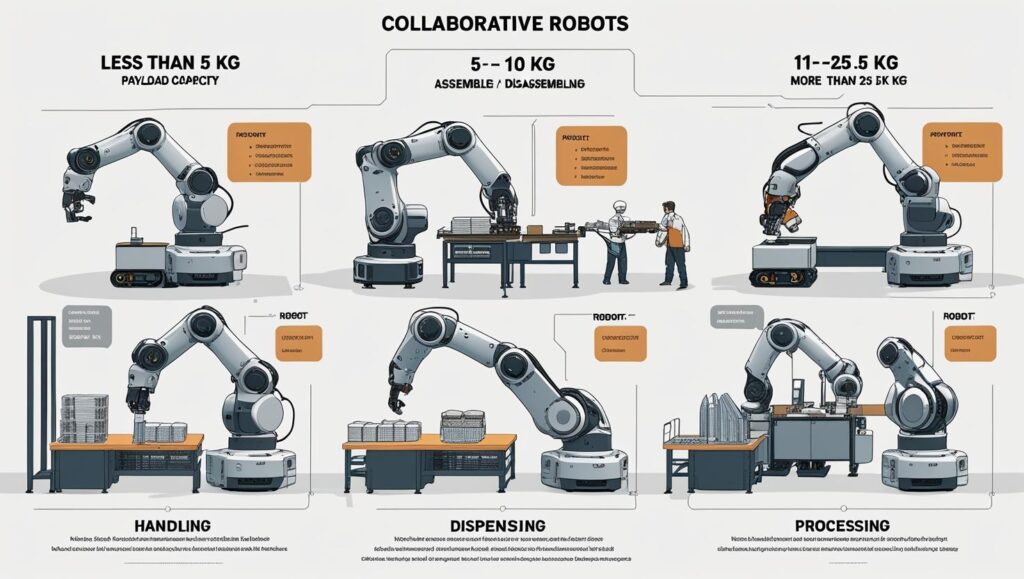The Human-Robot Collaboration (HRC) market is rapidly emerging as a transformative force across multiple industries, blending the strengths of human intelligence with the precision and efficiency of robotics. Unlike traditional industrial automation, which often isolates machines from people, HRC focuses on seamless, safe, and interactive cooperation between workers and robots within shared workspaces. This approach is unlocking new levels of productivity, agility, and safety in environments such as manufacturing, logistics, healthcare, and even education. Powered by advancements in artificial intelligence, machine vision, and sensor technologies, collaborative robots—or cobots—are becoming smarter, more intuitive, and easier to deploy. As businesses strive to address skilled labor shortages, reduce operational costs, and improve quality, the adoption of human-robot collaboration is accelerating globally. Analysts project strong double-digit growth for the HRC market over the next decade, fueled by increasing demand for flexible automation and the expanding capabilities of next-generation robotics systems.

As industries across the globe shift toward automation and digital transformation, the role of robotics is evolving from isolated machinery to intelligent collaborators. Human-Robot Collaboration (HRC) represents one of the most transformative developments in the robotics landscape. Once considered a futuristic vision, collaborative robots—commonly known as cobots—are now a rapidly growing force in sectors ranging from manufacturing and logistics to healthcare and customer service. These systems are designed to work directly and safely with human workers, creating a seamless interaction that enhances productivity, flexibility, and efficiency.
This shift is being driven by a confluence of global factors, including labor shortages, rising operational complexity, and technological maturity in artificial intelligence (AI), machine vision, and sensor technologies. The result is a market poised for significant expansion over the next decade.
The Shift from Automation to Collaboration
Traditional industrial automation has long relied on high-speed, high-precision machines that perform repetitive tasks within safety cages or restricted zones. While effective for mass production, these robots are rigid and inflexible, unable to adapt to dynamic environments or human presence. Human-Robot Collaboration marks a paradigm shift by prioritizing adaptability and interaction. Cobots are specifically engineered to operate in close proximity to humans without the need for physical barriers. They are equipped with safety-rated sensors, adaptive learning algorithms, and intuitive programming interfaces, allowing them to respond to human gestures, touch, or presence in real time.
The real value in HRC lies not in replacing human workers but in augmenting their capabilities. Cobots are particularly effective at handling dull, dangerous, or ergonomically taxing tasks, freeing up human employees for roles that require decision-making, creativity, or interpersonal skills. This collaborative approach allows organizations to strike a balance between the speed of automation and the nuanced judgment of human operators.
Download PDF Brochure @ https://www.marketsandmarkets.com/pdfdownloadNew.asp?id=194541294

Technological Advancements Accelerating Adoption
The rapid development of artificial intelligence, machine learning, and edge computing is significantly enhancing the capabilities of collaborative robots. Advanced vision systems now enable cobots to recognize objects, interpret gestures, and track movements with remarkable accuracy. Force feedback and tactile sensors allow them to adjust grip strength or motion dynamics in response to human interaction, ensuring safety and precision. At the same time, voice recognition and natural language processing are enabling more intuitive human-machine communication, further lowering the barriers to adoption.
Cloud integration is another game-changer. With real-time data connectivity, cobots can be monitored, updated, and controlled remotely. This not only improves scalability and maintenance efficiency but also allows companies to collect valuable operational data for continuous improvement and predictive maintenance.
Industry-Specific Applications and Market Penetration
In the manufacturing sector, cobots are already transforming production lines. They can be easily deployed for assembly, packaging, machine tending, and quality inspection tasks. Their ability to work side-by-side with human operators reduces the need for extensive reconfiguration and supports high-mix, low-volume production models, which are increasingly common in today’s market.
In logistics and warehousing, human-robot collaboration is streamlining fulfillment processes. Cobots are helping workers pick and sort items, navigate warehouse aisles, and manage real-time inventory tracking. The flexibility of these systems is especially valuable in e-commerce, where demand is unpredictable and speed is critical.
The healthcare industry is also embracing collaborative robots in a variety of roles. From assisting in surgeries and physical therapy to handling laboratory samples and disinfection tasks, cobots are improving efficiency and safety in environments where precision and hygiene are paramount. In some hospitals, robots now deliver supplies, guide visitors, and support telemedicine systems, all while maintaining human oversight.
Beyond traditional sectors, cobots are finding new roles in agriculture, education, and retail. In agricultural settings, they assist with harvesting, planting, and monitoring crop health. In classrooms and learning labs, collaborative robots are being used as interactive teaching assistants. In retail environments, they support customer service by managing inventory, guiding shoppers, or providing product information.
Challenges to Widespread Implementation
Despite the significant momentum behind the HRC market, several challenges remain that must be addressed to unlock its full potential. One of the most pressing issues is safety assurance. While modern cobots are designed with robust safety features, regulatory standards and industry guidelines are still evolving. Companies must ensure proper risk assessment and compliance with local and international safety regulations before deployment.
Another challenge is workforce readiness. While cobots are often promoted as easy to use, successful integration requires training and cultural alignment. Workers need to understand how to interact with robots effectively and without fear of displacement. Change management, upskilling, and communication are essential to fostering acceptance and trust within human-robot teams.
Cost and complexity can also be barriers, especially for small and medium-sized enterprises. Although cobots are generally more affordable than traditional industrial robots, upfront investment, integration, and maintenance costs can still be significant. As the technology matures and more plug-and-play solutions emerge, these costs are expected to decline, making collaborative robotics more accessible to businesses of all sizes.
Market Outlook and Economic Impact
The growth is driven by rising demand for automation, skilled labor shortages, and the increasing need for flexible production systems. North America, Europe, and Asia-Pacific are leading the charge, with high levels of adoption in automotive, electronics, and logistics sectors.
At the same time, venture capital and corporate R&D investments are pouring into the space. Startups and established players alike are racing to develop the next generation of cobots that are lighter, smarter, and more affordable. Strategic partnerships between robotics manufacturers, software developers, and system integrators are also accelerating market maturity and ecosystem development.
The economic impact of HRC extends far beyond robotics sales. It includes productivity gains, cost savings, improved quality, and enhanced worker satisfaction. Moreover, collaborative robots are driving a broader transformation in how work is organized, fostering new job categories focused on robot management, programming, and human-robot interface design.
Conclusion: A Future Built on Collaboration
Human-Robot Collaboration represents a fundamental shift in how we think about technology and labor. It is not merely a tool for automation but a framework for building more responsive, inclusive, and resilient workplaces. In this new paradigm, humans and machines are not competitors—they are teammates, each contributing what they do best.
As the HRC market continues to grow, it will redefine operational models across industries. Those who invest early in collaborative robotics, workforce training, and intelligent integration will be best positioned to lead in the next era of digital transformation. The future of work is not fully automated—it is collaborative, and that future is arriving faster than we ever imagined.
About MarketsandMarkets™
MarketsandMarkets™ has been recognized as one of America’s Best Management Consulting Firms by Forbes, as per their recent report.
MarketsandMarkets™ is a blue ocean alternative in growth consult611ing and program management, leveraging a man-machine offering to drive supernormal growth for progressive organizations in the B2B space. With the widest lens on emerging technologies, we are proficient in co-creating supernormal growth for clients across the globe.
Today, 80% of Fortune 2000 companies rely on MarketsandMarkets, and 90 of the top 100 companies in each sector trust us to accelerate their revenue growth. With a global clientele of over 13,000 organizations, we help businesses thrive in a disruptive ecosystem.
The B2B economy is witnessing the emergence of $25 trillion in new revenue streams that are replacing existing ones within this decade. We work with clients on growth programs, helping them monetize this $25 trillion opportunity through our service lines – TAM Expansion, Go-to-Market (GTM) Strategy to Execution, Market Share Gain, Account Enablement, and Thought Leadership Marketing.
Built on the ‘GIVE Growth’ principle, we collaborate with several Forbes Global 2000 B2B companies to keep them future-ready. Our insights and strategies are powered by industry experts, cutting-edge AI, and our Market Intelligence Cloud, KnowledgeStore™, which integrates research and provides ecosystem-wide visibility into revenue shifts.
To find out more, visit www.MarketsandMarkets™.com or follow us on Twitter , LinkedIn and Facebook .
Contact:
Mr. Rohan Salgarkar
MarketsandMarkets™ INC.
1615 South Congress Ave.
Suite 103, Delray Beach, FL 33445
USA: +1-888-600-6441
